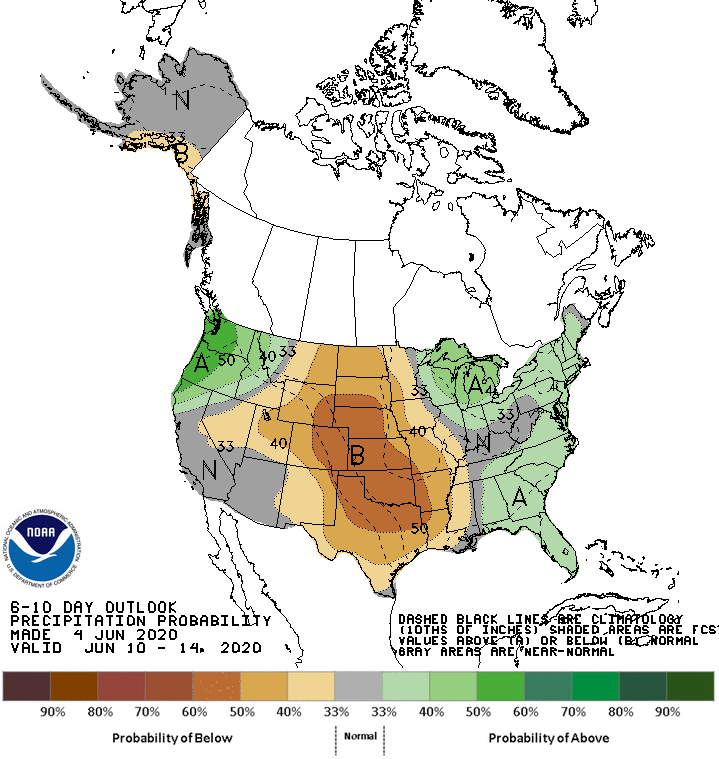–
The cotton market is attempting to venture into territory we’ve not seen in a while—prices with a “6” in the front. Prices touched the 60’s this week—the highest in almost 3 months. Staying there is still a question mark, however.
Prices (July futures) have “resistance” in the 59 to 60 cents area. But, July futures closed at 60 cents or better for 4 consecutive days this week, after a big jump on Monday of almost 2 ½ cents. The market is currently trading on a mix of positive and negative factors including US crop progress and conditions, US-China relations, and US export sales and shipments.
As of May 31, the crop was 66% planted—normal for that date, but 6 states were well behind normal, due to conditions being either too wet or too dry. The cotton crop was reported at 44% good to excellent condition compared to 46% last season. Texas was 40% short or very short on moisture. Recent rainfall over most of the Texas area has been mostly ½ inch or less—more in the south than in the west.
Forecast models show very little precipitation over most of Texas for the next 2 weeks. The rest of the US cotton growing area is expected to see mostly moderate to heavy amounts of rainfall. Prices will likely continue to respond to lack of rainfall- particularly in Texas.
–
US conditions could be offset, however, by events concerning US-China relations. The US-China trade relationship has been further strained in recent months by the coronavirus pandemic, and more recently by China’s action regarding Hong Kong, in which the US said it might retaliate. The US cotton industry needs China as a major buyer and, despite a Phase One agreement, the uncertainty of US-China relations and cotton purchases specifically, hinders the price recovery process.
Today’s export report was not good news. Net sales for the week ending May 28 were -9,888 bales due to cancellations. Shipments for the week were 247,200 bales—a “decent” level, but still well below the level needed to meet USDA’s projection of 15 million bales for the 2019 marketing year that ends July 30. It seems to be more and more evident that the US is unlikely to meet the USDA projection. This could deter upward price potential.
At present, I consider the market to still be below “resistance” of 59 to 60 cents. “Support” is at 54 cents. What does this mean? Further weakness could take us to the 55 cents neighborhood. Good news should keep up near the 59 to 60 cents area, and with even better news, the opportunity to finally break out of the 54-59 range. Price direction for both old crop and new crop will continue to focus on the US crop, US-China relations and implications that has for trade, and World Demand/Use.
New crop December futures continue below 60 cents. There is little to no incentive to take any pricing action at this time. But having said that, producers should understand and be prepared to use the Marketing Loan as one tool for the 2020 crop, should prices remain low. Also, before entering any contract and making any pricing decision, producers should understand and evaluate how such a decision would impact “beneficial interest” and eligibility for the Loan and any LDP/MLG.
This analysis and commentary is not affiliated with the University of Georgia
–
Don Shurley
Marketing and Policy Analyst
Cotton Economist- Retired
Professor Emeritus of Cotton Economics, University of Georgia – Tifton Campus


